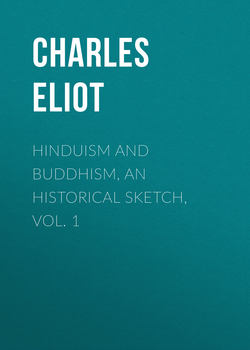Читать книгу Hinduism and Buddhism, An Historical Sketch, Vol. 1 - Charles Eliot - Страница 10
BOOK I
INTRODUCTION
10. Change and Permanence in Buddhism
ОглавлениеThus we have a record of Indian thought for about 3000 years. It has directly affected such distant points as Balkh, Java and Japan and it is still living and active. But life and action mean change and such wide extension in time and space implies variety. We talk of converting foreign countries but the religion which is transplanted also undergoes conversion or else it cannot enter new brains and hearts. Buddhism in Ceylon and Japan, Christianity in Scotland and Russia are not the same, although professing to reverence the same teachers. It is easy to argue the other way, but it can only be done by setting aside as non-essential differences of great practical importance. Europeans are ready enough to admit that Buddhism is changeable and easily corrupted but it is not singular in that respect31. I doubt if Lhasa and Tantrism are further from the teaching of Gotama than the Papacy, the Inquisition, and the religion of the German Emperor, from the teaching of Christ.
A religion is the expression of the thought of a particular age and cannot really be permanent in other ages which have other thoughts. The apparent permanence of Christianity is due first to the suppression of much original teaching, such as Christ's turning the cheek to the smiter and Paul's belief in the coming end of the world, and secondly to the adoption of new social ideals which have no place in the New Testament, such as the abolition of slavery and the improved status of women.
Buddhism arising out of Brahmanism suggests a comparison with Christianity arising out of Judaism, but the comparison breaks down in most points of detail. But there is one real resemblance, namely that Buddhism and Christianity have both won their greatest triumphs outside the land of their birth. The flowers of the mind, if they can be transplanted at all, often flourish with special vigour on alien soil. Witness the triumphs of Islam in the hands of the Turks and Mughals, the progress of Nestorianism in Central Asia, and the spread of Manichaeism in both the East and West outside the limits of Persia. Even so Lamaism in Tibet and Amidism in Japan, though scholars may regard them as singular perversions, have more vitality than any branch of Buddhism which has existed in India since the seventh century. But even here the parallel with Christian sects is imperfect. It would be more complete if Palestine had been the centre from which different phases of Christianity radiated during some twelve centuries, for this is the relation between Indian and foreign Buddhism. Lamaism is not the teaching of the Buddha travestied by Tibetans but a late form of Indian Buddhism exported to Tibet and modified there in some external features (such as ecclesiastical organization and art) but not differing greatly in doctrine from Bengali Buddhism of the eleventh century. And even Amidism appears to have originated not in the Far East but in Gandhara and the adjacent lands. Thus the many varieties of Buddhism now existing are due partly to local colour but even more to the workings of the restless Hindu mind which during many centuries after the Christian era continued to invent for it novelties in metaphysics and mythology.
The preservation of a very ancient form of Buddhism in Ceylon32 is truly remarkable, for if in many countries Buddhism has shown itself fluid and protean, it here manifests a stability which can hardly be paralleled except in Judaism. The Sinhalese, unlike the Hindus, had no native propensity to speculation. They were content to classify, summarize and expound the teaching of the Pitakas without restating it in the light of their own imagination. Whereas the most stable form of Christianity is the Church of Rome, which began by making considerable additions to the doctrine of the New Testament, the most stable form of Buddhism is neither a transformation of the old nor a protest against innovation but simply the continuation of a very ancient sect in strange lands33. This ancient Buddhism, like Islam which is also simple and stable, is somewhat open to the charge of engaging in disputes about trivial details34, but alike in Ceylon, Burma and Siam, it has not only shown remarkable persistence but has become a truly national religion, the glory and comfort of those who profess it.
31
There are curious survivals of paganism in out of the way forms of Christianity. Thus animal sacrifices are not extinct among Armenians and Nestorians. See E.R.E. article "Prayer for the Dead" at the end.
32
The Buddhism of Siam and Burma is similar but in Siam it is a mediæval importation and the early religious history of Burma is still obscure.
33
Although stability is characteristic of the Hinayana its later literature shows a certain movement of thought phases of which are marked by the Questions of Milinda, Buddhaghosa's works and the Abhidhammattha Sangaha.
34
E.g. the way a monastic robe should be worn and the Sîmâ.
